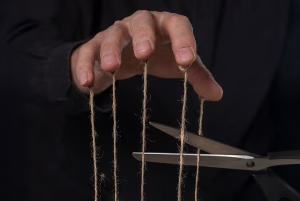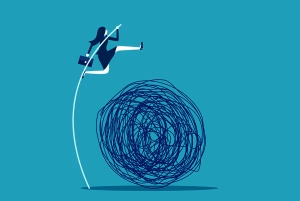
How to see the true nature of things
Have you ever caught up with an old friend and gone over old memories? You know “You remember that time when….” type of a thing. You’re reminiscing and enjoying the memories and they say something like “oh yeah, and you remember that Bill dropped his ice cream” and you think – was Bill even there that day?
Sometimes it can feel like you’re talking about two different times, you’re seeing the experience in completely different ways.
This is not at the experience level only. Sometimes it can be seen as something amusing and once your memory is jogged you come to remember a bit more clearly. However, this difference in the perceptions can destroy relationships and business partnerships, just because people don’t understand themselves and how they perceive the outside world.
so, how to see the true nature of things?
Your nervous system
OK, let’s start trying to understand things a little better by taking a brief look at how the nervous system works.
What about when we see things? The optical image of things falls on the retina and is then transmitted to the brain.
Now the question we should ask ourselves is, are we really seeing what we are looking at?
We filter information and this means that we perceive the external world in our own way, in the way we have already learnt how to perceive things. The brain perceives the external world the way it is already programmed to.
Sounds a bit odd doesn’t it? Let’s dig a little deeper into what’s happening.
Information delivery across the brain networks is transmitted chemically and electrically through brain cells called neurons. These cells are connected together forming a pathway through which electricity can flow.
During the process of storing information, chemicals are released and stored in our neurons.
The brain is composed of many networks between neurons. The structure of these networks can be modulated by the environment over time. The brain function can be reprogrammed through the modulated network structure, allowing humans to have the ability to learn and grow autonomously.
These programs also have the possibility to drift and this can cause stresses, addictions and false perceptions.
Think about it. The human brain contains 100 billion neurons and each neuron has about 10 to 15 synaptic connections. You can begin to see how much information our brains process daily. It’s huge!
Now let’s talk about the most interesting part, the experience.
Experiencing is just the phenomenon happening merely at one level, or layer if you like. This layer of the brain is what is called the subconscious. This is where all the experiences are installed and recalled in a very deep way. The subconscious processes are actually what determines how we experience and consequently perceive the world.
Through learning and development, neural pathways form within neural networks. Pathways across the networks run the function of the brain. Over time, certain pathways become more dominant because they are being reinforced with similar experiences.
Unfortunately, over time, habitual behaviours cause our neurons’ plasticity and pathways to become inflexible. In other words, “You can’t teach an old dog new tricks.”
So, as we form our own structure of thoughts, we tend to have our own interpretation of the things and see the world accordingly.
Each individual is likely to have a different perception of things and that is why the philosophers said that we can never see the true nature of things. We can only see the pathways we have been trained to see.
So, will we ever be able to see true reality?
If we regard reality as a purely subjective experience then, of course, we are seeing the true reality all the time. It’s your experience after all…
However, if we wish to experience reality in a more objective manner, more ‘accurately’ if you will, we will not be able to see the full reality unless we can understand our past very well.
What we have seen or done in the past strongly influences the way our memories are recorded. This also has a bearing on how we encode new experiences.
We will have to understand how our beliefs systems were formed and how they are controlling our thoughts, actions, language and perception.
How can I do that?
In NLP there are many tools we can use to help understand our dominant pathways and consequently the way we see life.
If we start with our internal world we can start by understanding our limiting beliefs and how we can go about addressing them.
From here there are many methods we can use to help us see the full picture. We cover these on the NLP practitioner course and they include Association / Dissociation, exploring submodalities, NLP perceptual positions and many other techniques that can help us see ourselves and the nature of things in a new way.
In short, to be able to see the nature of things in a better way, we can follow these steps:
- Understand our belief system and our past experience
- Link the current experience to a similar past experience
- Observe our feelings
- Identify a root cause for our feelings
- Decide to change our feelings
- Give new meaning to the experience
In conclusion. By following these steps, we can discover a new way of seeing things. This should help build new pathways to a better understanding of reality.
Cool eh…..
Would you like to know more?
Our blog page has many more articles for you to read.
Alternatively, head over to our NLP glossary where you can find a list of NLP terms with lots of links to articles.
If you'd like to find out more about our courses where you can learn more head over to our courses page.
Thanks for reading!
Chris
ABNLP Trainer
Founder: Insights NLP
Phone +62 (0) 812 3895 2053













